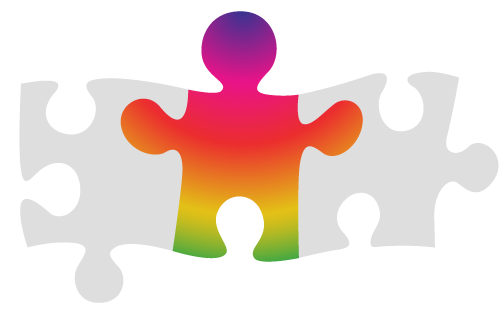Every child with PSS is different, some have few symptoms and some have more. Symptoms can range in severity from person to person. Here is a brief overview of commonly reported medical symptoms...
Physical
Symptom
Vision - Nystagmus
Description
Fast, uncontrollable movements of the eyes
Treatments
Patching and surgery for other eye conditions have anecdotally resulted in reduced eye movement.
Specialist
Ophthalmologist
Vision - Strabismus
The two eyes do not line up in the same direction, and therefore do not look at the same object at the same time.
Patching and corrective surgery, glasses.
Ophthalmologist
Vision - Cortical Visual Impairment
A neurological visual impairment in which the patient exhibits variable vision
Vision therapy; simplified images in bright colors against a plain, high contrast background.
Ophthalmologist and Vision Specialist or TVI
Muscles - Hypotonia
Decreased muscle tone and strength resulting in floppiness.
Physical therapy, occupational and speech therapy can help increase strength. Other therapies to note are hippotherapy, aqua therapy and swimming. Use of orthotics such as compression suits and ankle/foot orthosis may assist weaker muscles. Early intervention is recommended.
Physical Therapist, Occupational Therapist, Speech Pathologist
Bilateral Parietal Foramen
Big soft spots in the skull that may never fully close
Generally no treatment is required.
Neurologist
Exostoses
Extra bone growths
Full body X-Ray's (the first is usually scheduled at 3 years old) are recommended to monitor the skeleton. Often the growths are non-invasive to the body but they can be removed in surgery if they cause any pain and discomfort or if they impair typical bone structure growth.
Orthopedist
Distinctive Facial Features
Can include a wide, short skull, prominent forehead, narrow bridge of the nose, shortened distance between the nose and upper lip, a downturned mouth and large, low set ears.
Generally no treatment is required.
Brachycephaly (flat head syndrome)
A distortion or misshaping of the back of the skull
An orthotic helmet.
Pediatric Craniofacial Surgeon
Umbilical Hernia
When a portion of the intestines or abdominal organ(s) protrudes from the belly button
Generally heals by itself by age 1-2. If it is still present at 3-4 years it can be fixed with surgery.
Epilepsy / Seizures
A neurological disorder that causes disrupted nerve cell activity resulting in seizures
Testing can include an EEG and treatment will involve medications.
Neurologist
Genitourinary tract defects
Birth defects that can effect internal and external sex organs such as the penis or ovaries, as well as urinary organs such as kidney and bladder.
Treatments depend on the defect but can include hormone therapy and surgery.
Urologist
Micropenis
An unusually smaller than typical penis
Testosterone treatments if desired.
Urologist
Undescended Testes
When both or one of the testicles do not descend into the scrotum but remain in the abdomen
Surgery if desired.
Urologist
Agenesis of the Corpus Callosum
A complete or partial absence of the Corpus Callosum, the band of white matter connecting the two hemispheres in the brain.
Testing can include a CT scan or MRI, no treatment recorded.
Neurologist
Sensorineural hearing loss
Hearing loss caused by damage to the inner ear. It can range from mild to severe resulting in total hearing loss.
Generally there is no treatment available.
Otolaryngologist or ENT specialist
Intellectual / Developmental
Intellectual disability
Below average I.Q, impacting general mental ability.
Early intervention therapies such as physical, occupational and speech therapies and life long support.
Developmental delay
A significant delay in a child meeting his or her milestones as compared to other children in the same age group.
Early intervention therapies such as physical, occupational and speech therapies.
Physical Therapist, Occupational Therapist, Speech Pathologist
Behavioural
Autism spectrum disorder or autistic behavioural traits
A developmental disorder that is characterized by difficulty in communicating and interacting.
Early intervention therapies and an individualised treatment plan as needed. Including but not limited to occupational, speech and behavioural therapies
Occupational Therapist, Speech Pathologist, ABA therapist

